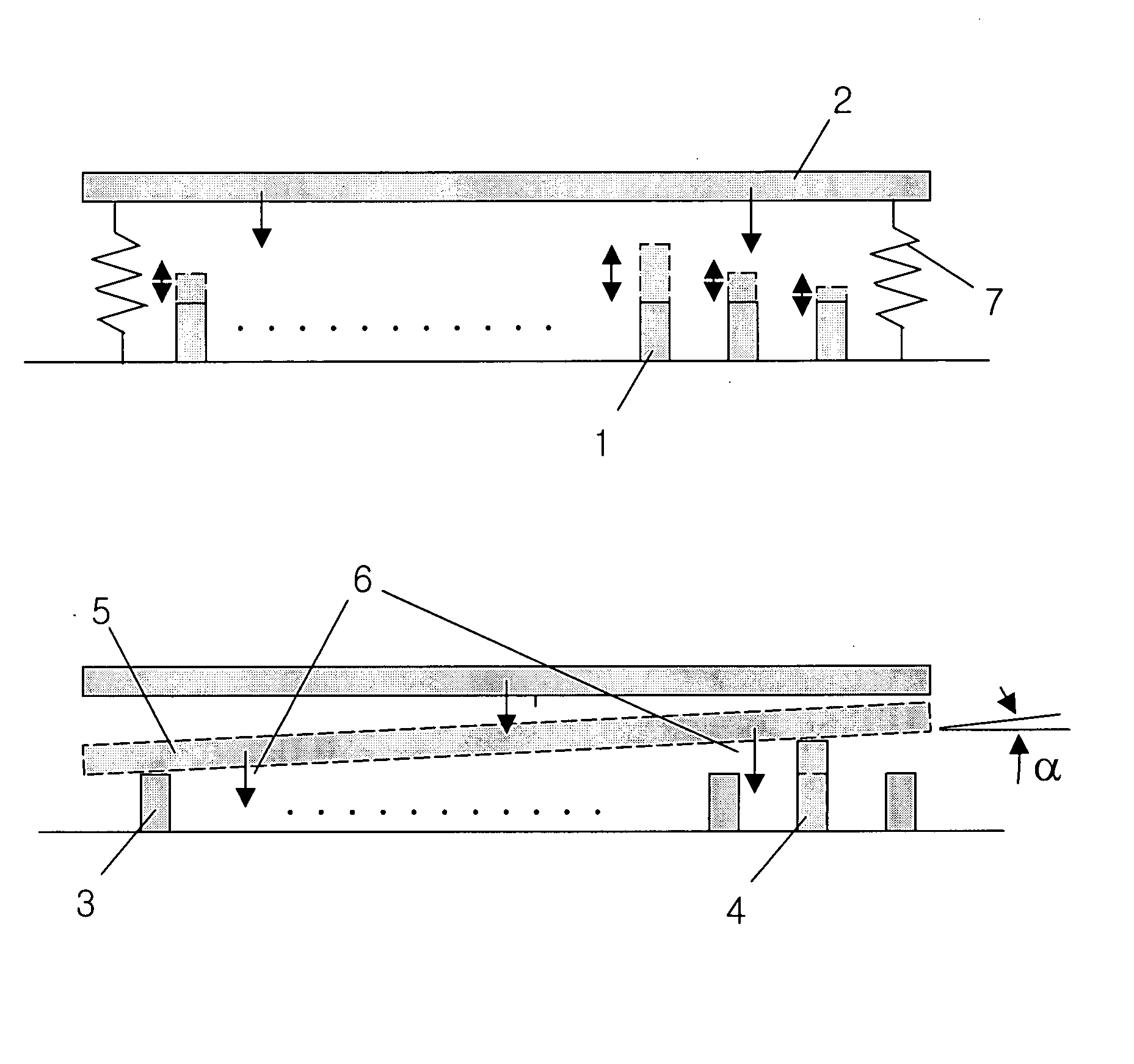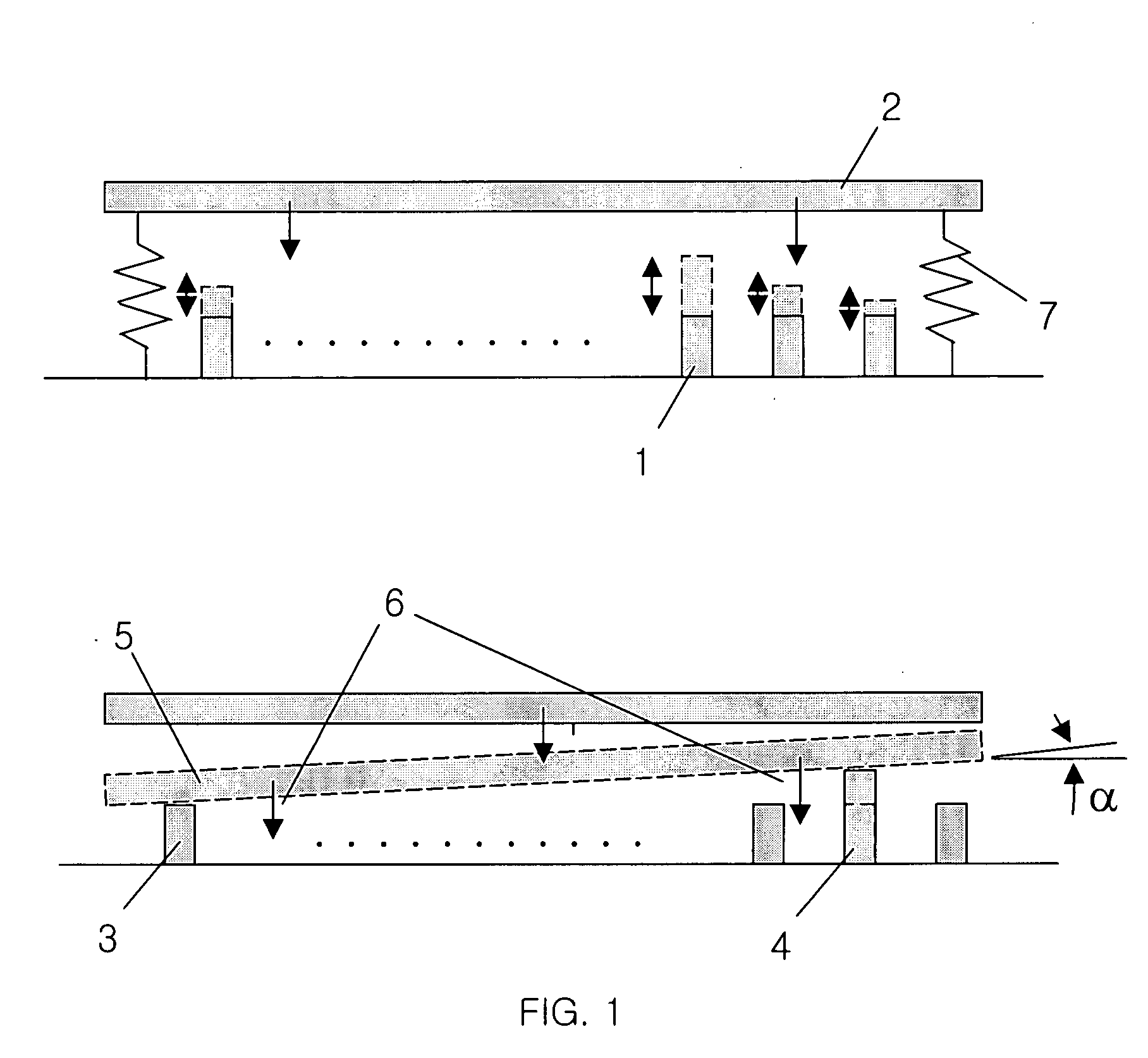Variable focal length lens and lens array comprising discretely controlled micromirrors
- Summary
- Abstract
- Description
- Claims
- Application Information
AI Technical Summary
Benefits of technology
Problems solved by technology
Method used
Image
Examples
Embodiment Construction
[0034]FIG. 1 shows the concept of the DCM with the variable supports 1. The variably supported discretely controlled micromirror (VSDCM) uses supports 1 providing gaps of various width through which the micromirror can move. The supports 1 are located under the micromirror 2. Translation and rotation of the VSDCM are determined by combinations of gaps, which are determined by variable supports 3, 4 on which the micromirror 5 rests. Gaps determined by the variable supports are controlled and the micromirror rests on the controlled supports 3, 4 by attractive force 6. Therefore, the combination of gaps which the supports 3, 4 provide determines translation and rotation of the micromirror 2. Gap variation by the supports 3, 4 is determined by bistable motions of the supports 3, 4 and the motions are controlled by digital voltage. The position of micromirror 5 is restored to its initial position by the force of flexible spring 7 when the attractive force is off.
[0035]FIG. 2 shows anoth...
PUM
 Login to View More
Login to View More Abstract
Description
Claims
Application Information
 Login to View More
Login to View More - R&D
- Intellectual Property
- Life Sciences
- Materials
- Tech Scout
- Unparalleled Data Quality
- Higher Quality Content
- 60% Fewer Hallucinations
Browse by: Latest US Patents, China's latest patents, Technical Efficacy Thesaurus, Application Domain, Technology Topic, Popular Technical Reports.
© 2025 PatSnap. All rights reserved.Legal|Privacy policy|Modern Slavery Act Transparency Statement|Sitemap|About US| Contact US: help@patsnap.com



